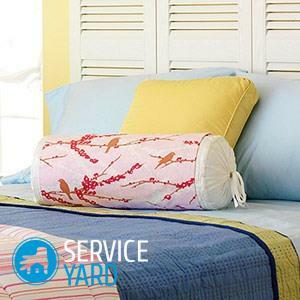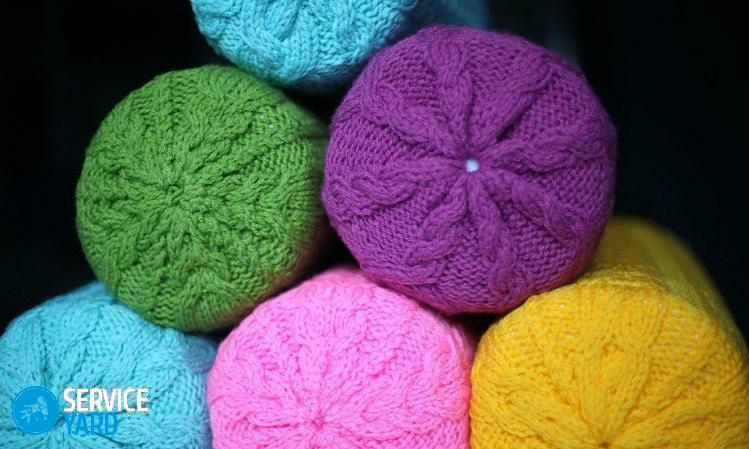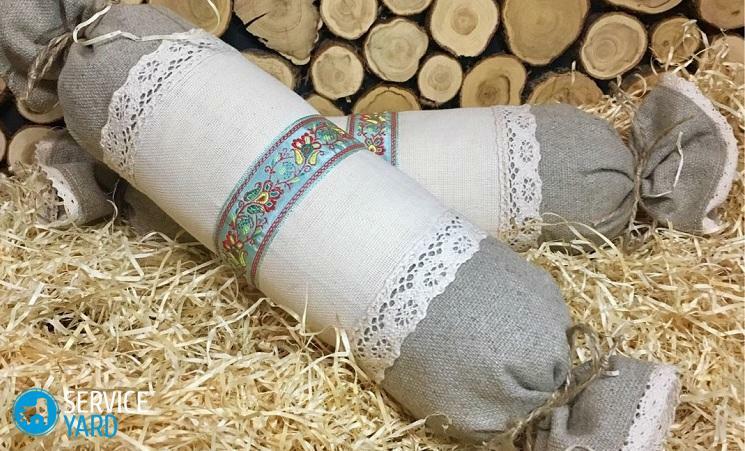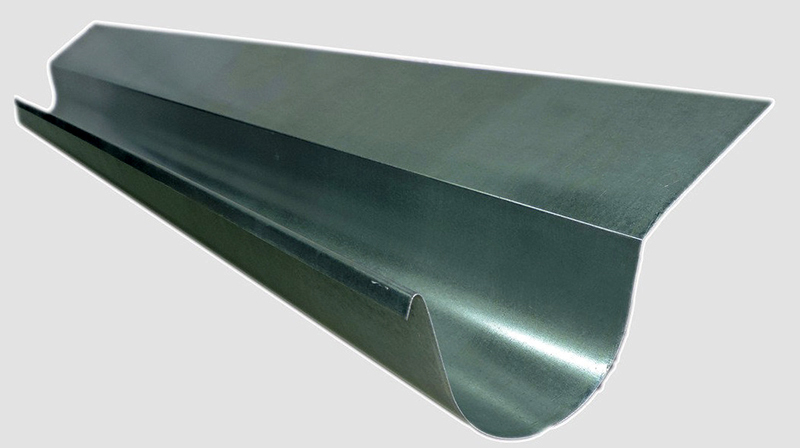
- What is it for?
- What are the rollers?
- We select materials
- Pillow on ties
- Roller on zippers
- How to sew a pillow-candy?
- How to sew a pillow for manicure?
The highlight of the interior can give any little thing, even the most unpretentious. Beautiful napkin, homespun rug in the hallway, a panel of straw - handmade products are now very popular. But for some items you need special tools and pre-prepared materials. But a sofa pillow can be made of what is near at hand or in the nearest store. Now we'll talk about how to sew a cushion-cushion with your own hands - patterns for this will not be needed.
to the contents ↑What is it for?
It would seem that there may be questions? The pillow is needed either for sleeping or for decoration. It's true, but not really. Of course, decorative pillows and those on which they sleep are the most popular models. In fact, there are other products of this kind, and almost everything you can do with your own hands:
- conventional - square or rectangular;
- decorative - in the form of circles or flat figures;
- decorative in the form of three-dimensional figures;
- rollers.
Important! In fact, the decoration of the room can be any pillow, even the most ordinary. All that is needed is to make a beautiful pillowcase on it, which you can wear only in the daytime. A purely decorative role is played by voluminous figures, like roses or tulips.
As for the rollers, they are universal. In addition to the fact that they can become a very worthy detail of the interior, they can be laid on, and also placed under different parts of the body - under the head, neck, back, arm, legs, if necessary.
to the contents ↑What are the rollers?
Before you sew a pillow-roller, think about exactly what filler cylinder you want. It can be:
- "sweetie":
- pillow on screeds;
- zippered pillow;
- cushion on buttons or Velcro.
We select the materials
To get a good cushion-roller with your own hands, a pattern is not needed, but the materials are best to pick up right away.
You will need:
- cushion cloth;
- fabric for pillowcase;
- fittings - zippers, buttons, velcro;
- filler;
- braid;
- decorative elements.
Roller fabric
For a pillow, whether it is with a pillowcase or not, it is better to take a natural cloth - cotton or linen. Much depends on what you take the filler. If you have a sheet of foam, then absolutely anyway, tight weave or sparse. For a finely divided filler, a dense material is preferable.
Important! A new cotton or linen fabric is washed after washing, so it is necessary to wash it before cutting.
Fabric for decorative pillowcase
Since you are not going to sleep on it, the material can be anything - from knitted fabrics to velvet and brocade. The main thing is that the pillowcase should be in harmony with the rest of the details - a coverlet, curtains, wallpaper.

Filler
If you need a cushion-roller with your own hands, the master class begins with the choice of filler. It depends on what the bag will be stuffed with, the way of manufacturing depends.
Suitable for you:
- foam rubber;
- holofiber;
- grech;
- buckwheat husk.
The choice of filler depends on how hard your product should be:
- Foam pillow will be soft. The roller is sewn literally in half an hour, but foam rubber has one very serious drawback - it eventually breaks up and emits unpleasant substances.
- Working with a holofiber is not much more difficult, but this material is absolutely neutral, does not react with the environment, does not cause allergies. In addition, it is very not like mites and mold.
- Buckwheat or buckwheat husks are usually recommended to those who need orthopedic pillows. The roller is quite hard. But it is able to take the best shape for you. In addition, buckwheat is a natural material that does not cause harm to health. If we talk about shortcomings, then it is only one - the shell must be tight.
Important! It is not necessary to stuff a roller down - this filler in many causes allergy, and in addition, dust is accumulated in the feather pillows - that is why they are most often refused.
to the contents ↑Pillow on couplers
The easiest option. If you have never done needlework and first thought about how to sew a cushion for a sofa, it's better to start with it.
The manufacturing method depends on the filler:
- roller made of foam rubber;
- roller with any other filler.
With foam rubber
In this case, you do not need an inner bag. The roller consists of only two parts:
- foam rubber cylinder;
- removable pillowcase.
The first thing you need to find a strip of foam rubber. The longer it is, the thicker the roller:
- . Twist the strip into a tight cylinder.
- Use a needle with a thick thread to sew the workpiece so that it does not spin-you can do this with any seam that you know.
- The outer edge of the strip is sewn to the previous layer with a few tight stitches.
Important! Foam is easily torn, so stitches should not be small and frequent.
Pulling the pillowcase
The pillowcase pattern is a rectangle. But before you make a pillow-roller with your own hands, you need to measure something and remember the school course of mathematics. To remove the measurements, you will need a centimeter tape or thick strong thread:
- Measure the thickness of the foam cylinder.
- Calculate the radius of the side part by dividing the obtained measure by 6.28.
- Measure the length of the cylinder.
- To this measure, add a doubled radius of the sidewall.
- Draw a rectangle, one side of which is equal to the length of the foam piece with a double radius added to it, and the second one is the thickness of the cylinder; on the long sides, make allowances of 2 cm, for short ones - 1 cm.
Begin to sew:
- On short sides, you need to make the kulisks. The allowances are wrapped on the wrong side first by 0.5 cm, and then - by 1.5 cm, sweep and stitch.
- From the wrong side on the stock at a distance of 2.5 cm from the long side, make a round hole, wrap its edges with a dense stitching seam.
- Do the same hole on the other side.
- Fold the workpiece in half, aligning the long sides.
- Stitch the seam.
- Remove the workpiece.
- Insert the shoelaces into the wings.
- Put the pillowcase on the foam rubber cylinder.
- Tighten the shoelaces - they can be tied together.

Another filler
To sew a pillow-roller with your own hands and stuff it with buckwheat, you need to make 2 cases: one - solid, the other - removable. The second cover is made exactly the same as for the roller with foam rubber. The first, which is also called a pouring or embankment, is also easy enough to sew. In this case, too, knowledge of how to calculate the radius along the circumference is useful:
- Draw a circle on the paper that is the size of the desired sidewall dimension.
- Calculate the width of the strip from which you will sew the cover - it is equal to twice the radius of the side panel, multiplied by 6.28.
- Draw a strip of the same width, and its length is equal to the desired length of the pillow.
- Cut out the details - strip and 2 identical circles, not forgetting about the allowances.
- Process all slices with the overlock.
We are assembling the
mound. There are two ways to do this:
- on the front side;
- on the wrong side.
Important! The first method is good for synthetic tissues, such as microfibre, aviwent or parachute silk. The second is for crumbling materials.
There are no fundamental differences, just in the first case you do not have to turn out the workpiece:
- Fold the strip in half with the wrong side outwards, aligning the long sides.
- Sweep and stitch the seam.
- To one short cut, sweep and fasten the circular part.
- Do the same on the second side, but do not sew the circle until the end.
- If necessary, cut the allowances to prevent the fabric from jamming in the joints. If you do not sweep them, you can cut it close to the line and sweep it together.
- Remove the workpiece.
- Fill it with filler.
- Carefully seal the hole.
Lightning roller
The manufacturing sequence is exactly the same as in the previous case. The difference lies in the shape of the boot. You do not have to close anything manually:
- Uncover the cover in the same way as in the previous case, that is, cut out rectangles and 2 circles.
- Process details with an overlock.
- On the long sides of the rectangle, press the outs on the wrong side.
- Sweep lightning - it should be the same length as the rectangle.
- Attach the zipper.
- Turn the workpiece to the wrong side.
- Sweep and stitch both circles.
- Remove the cover and insert the cushion.
How to sew a pillow-candy?
This version of the cushion is not much different from the roller on the screeds. In the same way, the rectangle is sewn into a ring, at the edges is a kulisk, into which a cord is inserted. But if you are thinking how to sew a pillow-candy with your own hands, you should take care of that at hand was lace or sewing.
Important! Lace can be made from the remains of tulle - then your creation will certainly be in harmony with the curtains. But this is possible only in the case of tulle with a large pattern.
You can decorate the "candy" after the pillowcase is ready. To begin with, sew the lace along the right edge with a stitching suture, with small stitches. Then - to tighten the thread and lay beautiful assemblies, and only then stitch or sew by hand to the pillow.
to the contents ↑How to sew a pillow for manicure?
This cushion is also a roller. Manufacturing technology is not much different from the previous ones, only fabric and filler need to be selected more carefully.
Important! It is better to make such a cushion with a cover that can be removed and washed, if suddenly a lacquer gets on the pillow.
Fabric for the cover is better to take a synthetic, but one that can not be damaged by a solvent or varnish. As a filler suitable buckwheat or hollofayber - foam is not very well behaved when in contact with acetone and other solvents.
Make sure that there is nothing difficult in sewing a cushion-cushion with your own hands, and, in a variety of variations of models? Then for work, you will have a fascinating work, the result of which you will be proud for a long time!



